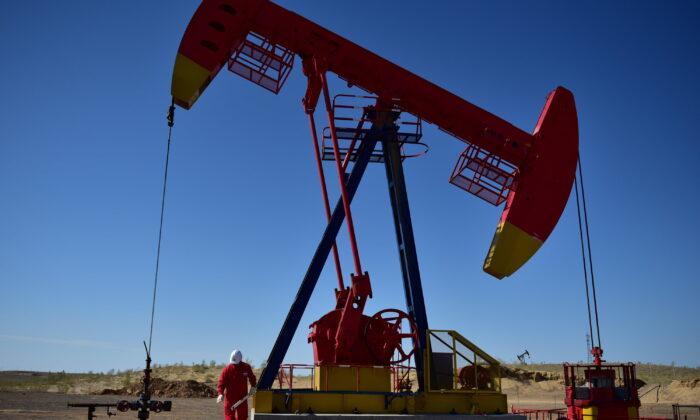LONDON—Oil prices were broadly steady on Thursday as the market weighed tight supply against demand fears, after a build in U.S. crude and gasoline stocks sent prices to multi-month lows in the previous session.
Brent crude futures inched up 36 cents, or 0.37 percent to $97.14 a barrel by 0925 GMT, while West Texas Intermediate (WTI) crude futures were up 43 cents, a 0.47 percent gain, at $91.09.
Both benchmarks fell to on Wednesday to their weakest levels since before Russia’s Feb. 24 invasion of [Ukraine], that Moscow calls “a special operation.”
The move followed an unexpected surge in U.S. crude inventories last week. Gasoline stocks, the proxy for demand, also showed a surprise build as demand slowed, the Energy Information Administration said.
The decision on Wednesday by the Organization of the Petroleum Exporting Countries and allies such as Russia, known as OPEC+, to raise its oil output target by 100,000 barrels per day (bpd) in September has added to bearish sentiment.
“The largely symbolic increase will obviously not provide a significant buffer to any potential supply shock, but the oil balance will not get tighter either,” said Tamas Varga of oil broker PVM.
While the increase is equivalent to just 0.1 percent of global demand, the demand outlook remains clouded by rising fears of an economic slump in the United States and Europe, debt distress in emerging market economies, and a strict zero COVID-19 policy in China, the world’s largest oil importer.
Still, the group’s limited spare capacity, which it highlighted in a statement on Wednesday, is providing a floor to oil prices.
“We believe (limited spare capacity) will effectively result in a production increase of just one-third of the agreed volumes in September,” UBS oil analyst Giovanni Staunovo said.
Edward Moya, senior analyst with OANDA, said he expected prices to trend higher even against the worsening economic backdrop.
“Crude prices should find strong support around the $90 level and eventually will rebound towards the $100 barrel level even as the global economic slowdown accelerates,” he said.
Additional price support came from the Caspian Pipeline Consortium (CPC), which connects Kazakh oil fields with the Russian Black Sea port of Novorossiisk, and which said on Wednesday that supplies were significantly down.





